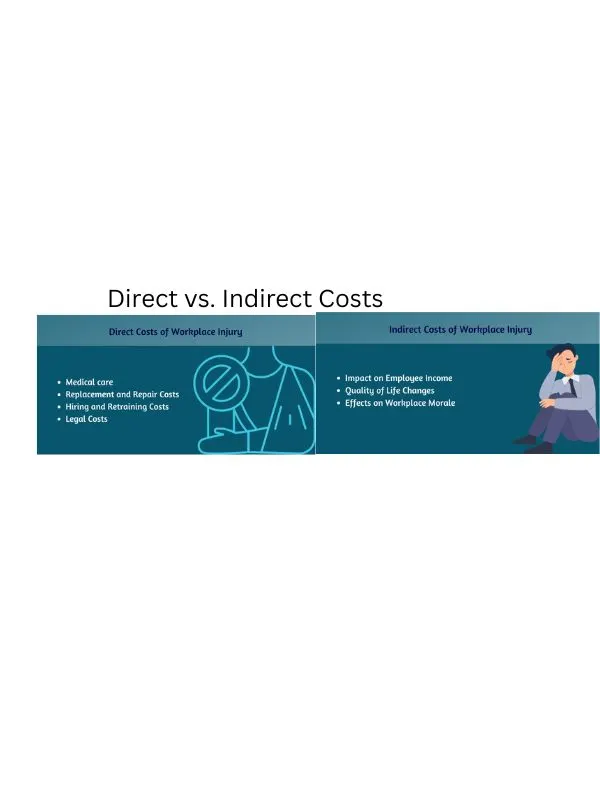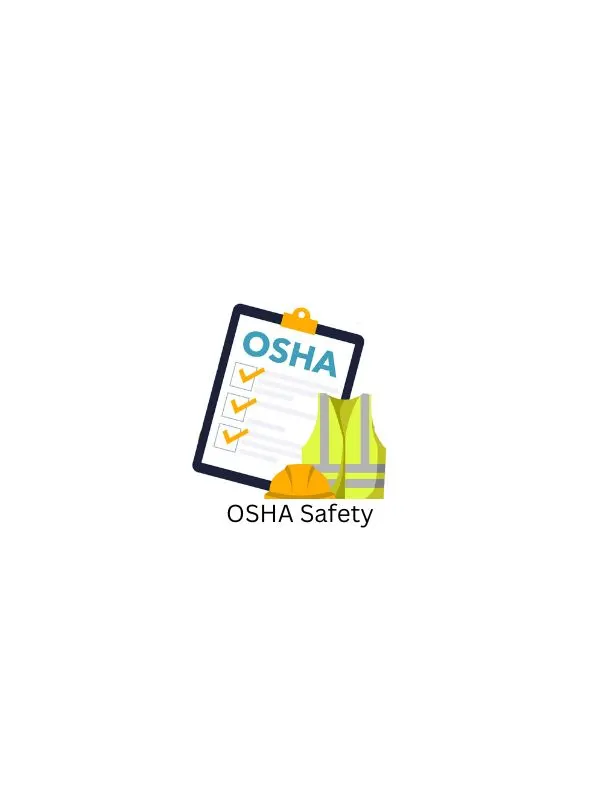The Hidden Financial Impact: Understanding Workplace Accident Costs for Employers
Which of the following costs of workplace accidents affects employers? when discussing workplace safety, many business owners focus primarily on compliance and employee wellbeing. However, there’s another critical aspect that deserves attention: the substantial financial burden that workplace accidents place on companies. Understanding the true cost of workplace injuries goes far beyond what meets the eye, encompassing both obvious expenses and hidden financial drains that can significantly impact a company’s bottom line.
The Real Price Tag: Direct vs. Indirect Costs 
Direct Costs: The Visible Expenses
The direct cost of workplace injuries represents the immediate, easily quantifiable expenses that employers face when accidents occur. These typically include:
- Medical treatment and hospitalization costs
- Workers’ compensation payments
- Legal fees and litigation expenses
- Equipment replacement or repair costs
- Emergency response expenses
Most employers are well aware of these direct expenses, as they appear clearly on financial statements and insurance claims. However, what many business leaders fail to recognize is that these visible costs represent only the tip of the iceberg.
The Indirect Cost of Accident: The Hidden Financial Drain
The indirect cost of an accident often exceeds direct expenses by a ratio of 4:1 or even higher. These hidden cost of accident components include:
Productivity Losses:
- Work disruption at the accident scene
- Time spent by supervisors and coworkers dealing with the incident
- Reduced productivity while investigating the accident
- Training replacement workers
- Overtime costs to maintain production schedules
Administrative Burden:
- Accident investigation time
- Paperwork and reporting requirements
- Insurance claim processing
- OSHA compliance activities
- Legal consultation and preparation
Long-term Impact:
- Increased insurance premiums
- Potential regulatory fines
- Damage to company reputation
- Employee morale issues
- Higher turnover rates
Who Bears the Financial Burden?
A common misconception among business owners is that insurance covers all accident-related expenses. The reality is quite different. The cost of an accident is paid from company resources in multiple ways, even when insurance is involved.
How Does a Workers Comp Claim Affect the Employer?
When employees file workers’ compensation claims, employers face several financial consequences:
- Experience Rating Impact: Claims history directly affects future premium rates. Companies with higher claim frequencies pay significantly more for workers’ compensation coverage.
- Deductible Payments: Most policies include deductibles that companies must pay out of pocket for each claim.
- Administrative Costs: Processing claims requires significant time investment from HR and management teams.
- Indirect Expenses: The indirect cost of accident continues to accumulate long after the initial incident through lost productivity, training costs, and operational disruptions.
The Economics of Prevention: Why OSHA Safety Pays 
Understanding that OSHA safety pays isn’t just a catchy slogan—it’s a proven business principle backed by solid financial data. Companies that invest in comprehensive safety programs consistently demonstrate better financial performance through:
Reduced Accident Frequency
What reduces the likelihood of accidents occurring? Effective safety programs typically include:
- Regular safety training and education
- Proper equipment maintenance and inspection
- Clear safety protocols and procedures
- Employee engagement in safety initiatives
- Regular workplace hazard assessments
- Investment in modern, safer equipment
Calculating the Return on Safety Investment
Smart employers use an injury cost calculator to understand the true financial impact of workplace accidents. These tools help businesses:
- Quantify both direct and indirect costs
- Compare accident costs to prevention investments
- Make data-driven decisions about safety spending
- Justify safety budget allocations to stakeholders
The True Cost of Safety Investment
Many employers hesitate to invest in comprehensive safety programs due to upfront costs. However, when comparing the cost of safety measures against potential accident expenses, the return on investment becomes clear:
Prevention Costs:
- Safety equipment and protective gear
- Training programs and materials
- Regular equipment maintenance
- Safety consultations and assessments
- Policy development and implementation
Accident Costs:
- Medical expenses and compensation
- Lost productivity and overtime
- Equipment damage and replacement
- Legal and administrative expenses
- Insurance premium increases
The mathematics consistently favor prevention. A single serious workplace accident can cost more than several years of comprehensive safety program investments.
Understanding Direct and Indirect Injury Costs Through Real Examples
Consider a manufacturing company that experiences a forklift accident resulting in employee injury:
Direct Costs:
- Emergency medical treatment: $15,000
- Workers’ compensation payments: $45,000
- Equipment repair: $8,000
- Legal consultation: $5,000
- Total Direct Costs: $73,000
Indirect Costs:
- Production downtime (4 hours): $12,000
- Investigation time: $3,000
- Training replacement operator: $4,500
- Supervisor time managing incident: $2,000
- Decreased team productivity: $8,000
- Insurance premium increase: $15,000 (annual)
- Total Indirect Costs: $44,500
Combined Total: $117,500
This example illustrates how the hidden cost of accident can nearly equal direct expenses, creating a total financial impact that many employers underestimate.
Building a Business Case for Safety Investment
Progressive employers recognize that effective safety programs serve as profit centers rather than cost centers. By systematically addressing what reduces the likelihood of accidents occurring, companies achieve:
- Reduced Insurance Costs: Lower claim frequencies lead to reduced premiums
- Improved Productivity: Safer workplaces operate more efficiently
- Enhanced Reputation: Strong safety records attract better employees and customers
- Regulatory Compliance: Proactive safety measures prevent costly violations
- Employee Retention: Workers prefer safe work environments
Conclusion: Answering Which of the Following Costs of Workplace Accidents Affects Employers
The comprehensive answer to which of the following costs of workplace accidents affects employers is that all types of costs significantly impact businesses, but the indirect cost of accident often proves most devastating due to its hidden nature and long-term consequences.
When business leaders truly grasp which of the following costs of workplace accidents affects employers through multiple channels—increased premiums, lost productivity, administrative burden, and hidden expenses—the value proposition for comprehensive safety programs becomes undeniable.
When business leaders truly grasp how the cost of an accident is paid from company resources through multiple channels—increased premiums, lost productivity, administrative burden, and hidden expenses—the value proposition for comprehensive safety programs becomes undeniable.
The principle that OSHA safety pays isn’t just regulatory rhetoric; it’s sound business strategy. Companies that invest proactively in safety programs, use tools like an injury cost calculator to understand their exposure, and focus on what reduces the likelihood of accidents occurring consistently outperform competitors who view safety as merely a compliance requirement.
Smart employers recognize that the cost of safety investments pales in comparison to the total cost of workplace injuries. By understanding both the obvious and hidden cost of accident, business leaders can make strategic decisions that protect both their employees and their bottom line.
The question isn’t whether companies can afford to invest in comprehensive safety programs—it’s whether they can afford not to. When considering how does a workers comp claim affect the employer and the full scope of indirect cost of an accident, the answer becomes clear: prevention is always more profitable than reaction.
To learn more about protecting your business, explore our related articles on OSHA and reducing workplace injury risks.
People Also Ask
What is the average cost of a workplace accident to employers?
The average cost varies significantly depending on the severity of the injury, but studies show that the total cost of workplace injuries (including indirect costs) can range from $10,000 for minor injuries to over $500,000 for severe cases. The indirect cost of accident scenarios typically multiplies the direct medical costs by 3-10 times.
How long do workplace accident costs affect insurance premiums?
Workplace accidents can affect employers’ insurance premiums for 3-5 years through the experience modification rate system. The cost of workplace injuries continues to impact premiums until the claims fall outside the rating period used by insurance companies to calculate future rates.
What percentage of accident costs are indirect costs?
Research indicates that indirect costs typically represent 70-80% of the total cost of workplace injuries. These hidden costs include lost productivity, training replacement workers, administrative time, and regulatory compliance activities that many employers don’t initially consider.
Do small businesses pay the same accident costs as large corporations?
Small businesses often face disproportionately higher costs per accident because they lack the resources to absorb indirect expenses. While large companies can distribute costs across multiple departments, small employers may find that a single serious work injury significantly impacts their entire operation and cash flow.
How does a workers’ comp claim affect future hiring costs?
When employers have multiple workers’ compensation claims, they may face challenges attracting quality employees due to safety reputation concerns. Additionally, the cost of safety training for new hires increases as companies implement more stringent safety protocols to prevent future accidents.
What industries have the highest workplace accident costs?
Construction, manufacturing, healthcare, and transportation industries typically face the highest cost of workplace injuries due to the nature of their operations. The National Institute for Occupational Safety and Health (NIOSH) provides detailed industry-specific data showing how every industry can benefit from understanding how an injury cost calculator can help predict and prevent financial losses..
Can workplace accident costs be tax-deductible for employers?
While direct costs like medical expenses and insurance premiums are typically tax-deductible business expenses, the indirect cost of an accident (such as lost productivity and administrative time) represents lost revenue rather than deductible expenses. This makes prevention even more financially attractive since the cost of an accident is paid from company after-tax profits.
How quickly do accident costs impact a company’s bottom line?
Accident costs begin impacting employers immediately when an incident occurs. Direct costs hit within days through medical bills and workers’ compensation claims, while indirect costs accumulate over weeks and months as productivity losses, investigation time, and administrative burden continue to affect operations.
Disclaimer
Important Legal and Professional Disclaimer:
This article is provided for informational and educational purposes only and should not be construed as professional legal, financial, insurance, or safety advice. The information presented regarding workplace accident costs, workers’ compensation, OSHA regulations, and safety practices is general in nature and may not apply to your specific situation or jurisdiction.
Key Points:
- Not Professional Advice: This content does not constitute professional consultation and should not replace advice from qualified professionals including attorneys, insurance specialists, safety consultants, or financial advisors.
- Jurisdictional Variations: Laws, regulations, and insurance requirements vary significantly by location, industry, and company size. Always consult local regulations and professionals familiar with your specific jurisdiction.
- No Guarantee of Accuracy: While efforts have been made to provide accurate information, workplace safety regulations, workers’ compensation laws, and cost calculations change frequently. We make no warranties regarding the completeness, accuracy, or currency of the information provided.
- Individual Circumstances: Every workplace and situation is unique. Costs, legal requirements, and safety measures will vary based on your specific industry, location, company size, and operational factors.
- Professional Consultation Required: Before implementing any safety programs, making insurance decisions, or taking action based on this information, consult with qualified professionals who can assess your specific needs and circumstances.
Limitation of Liability: The authors and publishers of this content shall not be liable for any direct, indirect, incidental, consequential, or punitive damages arising from the use of this information. Users assume full responsibility for any decisions made based on this content.
Always seek professional guidance for your specific workplace safety, legal, and financial needs.




Thank you for another wonderful post. The place else may anybody get that kind of info in such an ideal means of writing? I’ve a presentation next week, and I’m on the look for such information.
It’s onerous to search out knowledgeable people on this matter, but you sound like you recognize what you’re talking about! Thanks